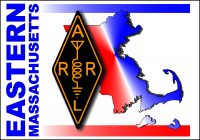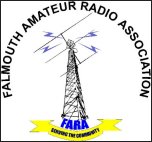You and your teams are invited to participate in the NH ARES SET – 5 Nov from 0800-1300.
Two-layered SET
Goals:
1) Test message handling skills
2) Exercise new ARESMAT procedures,
3) Move messages “out of the area.”
4) Stand up and operate two HF nets at the same time.
Exercise Plan:
1) Systems to be utilized and tested: HF Section nets, local VHF nets, NTS, Winlink
2) Repeaters will be operational until 10:30 am, and then all will fail, forcing all operations to go simplex. Repeaters should actually be shut down where possible, and ops will move to repeater output frequency, or to a simplex frequency as listed in Attachment A if a shutdown is not feasible.
3) All stations will be encouraged to operate on battery or generator power from 10:30am until exercise termination.
4) Two HF nets – Section Net to handle traffic, Resource Net to handle ARESMAT coordination – Liaison stations required for each net.
5) Give groups an opportunity to set up field HF stations to simulate ARESMAT volunteer reception centers
6) Precipitating disaster: Large category 5 hurricane that zeroes in on Hampton Beach before veering northward and ripping up the center of the state. No counties are spared, stretching all our resources very thin.
Layer 1 – External communications with ARC National HQ, FEMA, NWS via usual net structure
Specific assigned stations will simulate National Red Cross, FEMA and NWS to receive and originate messages on the Section Net. Local stations can simulate shelters or agency sites. Messages should include:
a) SITREPS
b) Support requests and replies
Layer 2 – ARESMAT manpower and resource requests via Section HF Resource Net
Messages requesting additional ARES operators and resources, messages between ARESMAT volunteer reception centers and Section Resource Net stations regarding:
a) In-Section support requests to SEC
b) NE Division requests
c) ARRL national requests
d) Communications between simulated ARESMAT volunteer reception centers and members of HF Resource Net.
1) Each group will have one member of its leadership team on the HF Resource Net
2) ARESMAT volunteer reception centers will be simulated at Salem I-93 rest area, Lebanon I-89 rest area, Seabrook I-95 State Liquor Store, Keene State Liquor Store, Pheasant Lane Mall southern overflow parking (actually in MA) (Do not actually set up at any of these locations without permission – find a suitable similar field location to set up in). HF operation will be required.
3) Messages coordinating our groups’ needs with simulated incoming volunteers from outside the state
Remember that ARESMAT messages are internal – we would be generating these ourselves during an actual disaster.
When playing a role, think about it as though it were real and act accordingly. Don’t forget to begin and end each message and tactical exchange with “This is a drill.”
2016 SET – Key Players
Section Level
HF Traffic & Coordination Net NCS (?)
HF Resource Net NCS (?)
Red Cross – Washington DC HQ simulator (K1PJS)
NWS-Gray simulator (?)
NTS Liaison (?)
Local Level
Section T&C Net Liaison
Section Resource Net Liaison
Agency sites (actual or simulated)
Reception Center Operator on Section Resource Net (if one is in your area)
—————-
2 years ago SECs in NE met in Worcester to discuss common challenges and coordinating response. One outcome was a draft plan for ARESMAT. We have incorporated that draft plan into our comm plan and will be testing it this SET.
Some details on the ARESMAT concept:
Layer 1
In past SETs, we’ve focused heavily on in-state agency message traffic. This is because, based on nationwide experience, 99% of the agency message traffic will be in-state. However, that 1% of traffic to distant agency offices and facilities (Red Cross and FEMA) can be pretty important stuff. Most of these messages will be sent during the very earliest hours after the storm has moved on, before national agency communication resources have been moved in and set up, typically within 72 hours.
Our Section Emergency Communications plan establishes two primary paths out to these agencies – Winlink 2000 radio email, and ARRL’s National Traffic System (NTS). In past years we haven’t exercised these resources to their fullest – this SET changes that. Even though a typical disaster won’t generate a large volume of external agency traffic, this exercise is designed to put stress on those systems and give everyone some practice in utilizing them.
Of course, we won’t be sending traffic to real agency sites – we’ll set up some simulated stations to handle that function.
Layer 2
During a major disaster such as the hurricane we’re using for this SET, many of the resources we assume will be there – us – won’t be. Family needs come first, and sometimes our jobs will require our presence immediately post-disaster. Instead of 250 NH-ARES members available, we might have fewer than 100 state-wide. Perhaps many fewer. Our repeaters will be down, personal equipment damaged or lost, and basic supplies like batteries in short supply.
That’s why we have ARESMAT – the ARES Mutual Assistance Team concept. An ARESMAT is a group of hams dispatched by a neighboring or distant ARES group in response to a call for assistance. They are supposed to be equipped to be self-sufficient so as to not become part of the problem. They are supposed to know what their mission is, where to go, who to contact, and how long they’ll stay before ever leaving home. The reality is that some or all of these things may not be true.
The plan calls for the requesting Section to set up one or more volunteer reception centers at or near the best point of entry to the disaster area. We have identified several, which are listed in the SET plan under Layer 2. ARES groups across the Section would participate in an HF “resource net.” ECs or their designees would send formal messages to the Section official on the net requesting specific resources. He or she would then coordinate with the reception centers to send in appropriate resources as they become available. The HF resource net would operate separately from the regular Section Traffic and Coordination Net, which will continue to do its regular job of moving agency and public message traffic and coordinating the activities of various nets and hotline circuits.
When an ARESMAT team is exiting the state, we would ask them to stop by the reception center on the way out to let the reception center know they were leaving the area. If that was impractical for any reason, they could check into the resource net or contacting the reception center via 2m FM on the way by. We know this will not always be possible, but this is a way to help ensure the safety of ARESMAT responders.
The SET plan asks each group with a potential reception center to simulate opening one from a field location, kind of a mini-Field Day setup. All it has to be is one HF NVIS station on 75m for the resource net, and a 2m station for local communications.
——————
I do hope you can join us. I also hope this invite and information will reinvigorate the ARESMAT plan discussion. We still have the draft plan and would be happy to recirculate to SECs for consideration.
73,
Wayne
Wayne W. Santos
N1CKM
SEC
NH ARES
n1ckm@arrl.net
n1ckm78sec@gmail.com
603-856-5459
Twitter: #n1ckm78
www.nh-ares.org


 The
The 
